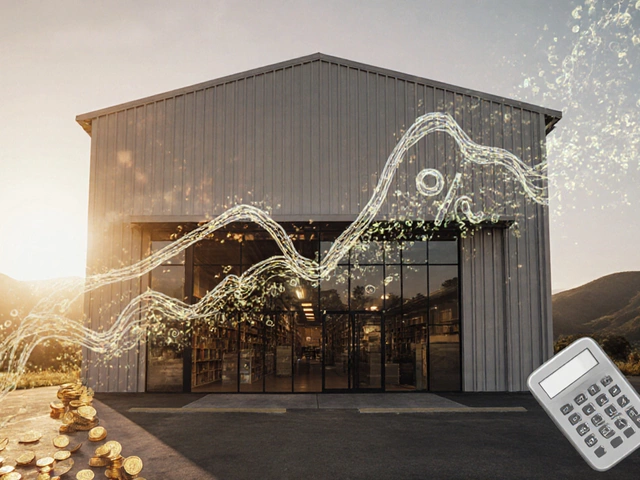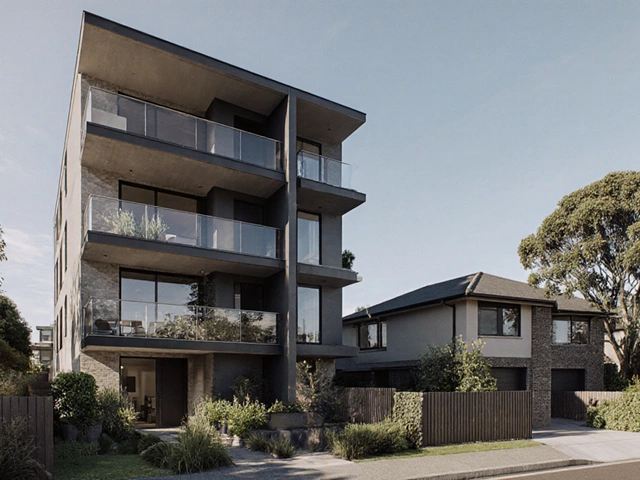Best Commercial Property Types for Smart Investment in 2025

If you had to put your hard-earned cash anywhere right now, would you pick an office tower in the city, a logistics warehouse by the highway, or a bustling strip mall? The commercial property game isn’t about luck; it’s about reading the market like a book. Rents, tenants, location—these things change quicker than you’d expect. And sometimes, what looked like a golden opportunity a couple of years ago is a money pit today. Investors who get it right know exactly how to sniff out a winning deal from the pack.
Breaking Down the Most Popular Types of Commercial Properties
There’s a staggering diversity within commercial property. Most people think 'skyscrapers and shopping malls,' but it’s so much broader. Commercial properties fall into several buckets, each with their quirks, benefits, and risks. Here’s a quick lay of the land:
- Office Spaces: Think modern skyscrapers, coworking hubs, business parks.
- Retail:
- Industrial/Warehouse:
- Multifamily (Yes, those giant rental complexes can count):
- Mixed-use:
- Specialty (hotels, self-storage, medical and more):
Every type has different economic drivers. For example, supply chain expansion has supercharged industrial warehouses. On the other hand, work-from-home trends dented demand for some office space, sending ripples through city investment markets. If you're thinking offices are dead, think again: big tech companies are still signing leases for trophy buildings in prime cities. Meanwhile, local shops are fighting tooth and nail with e-commerce. This isn't Monopoly; it’s real money and real lives at stake. Choosing the right horse to back isn’t just about what’s popular at the moment. You need to get deep into what drives income, occupancy, and long-term stability for each property type.
How Market Trends Shape Commercial Property Potential
Timing is everything. Sometimes you invest in a property just as its market is about to take off, and sometimes you get caught out by the next big shift. Over the last few years, the commercial property world has been turned on its head. Remote work crashed into the office market when nobody expected it. Warehouses boomed since everyone started shopping from the couch. If you follow the numbers, it’s wild to see how things have changed. According to Jones Lang LaSalle’s Global Real Estate Perspective for 2025, industrial real estate in the U.S. saw 2.7% average vacancy in urban hotspots, while urban office vacancies shot above 19% in certain cities.
But stats only tell half the story. Look at industrial: supply chain headaches sparked major companies to gobble up warehouse space near cities. Amazon, Target, and other retail giants leased or bought millions of square feet to keep goods close to shoppers. In contrast, retail faced empty stores—unless you owned a strip mall with takeout joints or nail salons, which bounced back quick after pandemic lockdowns. Even restaurants and gyms are making fierce comebacks in the right locations.
Want a surprising stat? According to CBRE’s 2025 outlook, top-performing retail properties (like grocery-anchored centers) in the U.S. averaged cap rates of 5.15%, while unstable malls hit rates as high as 9.1%. Lower cap rate = higher confidence in future returns. So, not all retail is created equal.
“Commercial property rewards those who spot trends early and act decisively. Wait too long, and the best deals will be gone.” — Michael Edwards, Managing Director at CBRE
Multifamily properties—huge apartment blocks and residential towers—keep grabbing investor attention, too. Vacancy is low, rents are climbing (especially in the Sun Belt), and demand seems endless. But that doesn't mean it's risk-free: new supply in active construction markets could flatten growth if you don't choose the right neighborhood.
| Property Type | Typical Cap Rate (2025) | National Vacancy Rate (2025) |
|---|---|---|
| Industrial / Warehouse | 5.4% | 2.7% |
| Office (Urban Prime) | 6.5% | 19.3% |
| Retail (Grocery-Anchored) | 5.15% | 6.8% |
| Multifamily (Class A) | 4.8% | 5.0% |

What Makes Certain Commercial Properties Outperform
Not all buildings are created equal, even if they're the same type. The real magic is in the details: location, tenant quality, lease length, and even parking ratios. Think about it: would you rather own an office tower leased to Fortune 500 companies on ten-year contracts, or a handful of generic storefronts stuck in a dying mall?
Let's break down the real difference-makers:
- Location: No surprise here—walkability, nearby transport, economic growth in the neighborhood, and overall demand all matter hugely. If you're investing in a new warehouse, you want fast highway access. For offices, public transit or city-center is gold.
- Tenant Mix and Credit:
- Lease Structure:
- Property Age & Upgrades:
- Adaptability:
For example, industrial property that's easily convertible for more tech-driven logistics (think: robotics) is attracting sky-high interest. On the office side? Flexible floor plans and wellness amenities (air filtration, natural light, bike storage) draw top tenants willing to pay a premium. Retail has gotten savvier, too—properties that survive are the ones anchored by supermarkets or pharmacies, not just fashion chains. These stores get steady foot traffic even during online shopping booms.
And don’t forget parking. In suburban areas, a property’s parking spaces often tip the scales. That might sound boring, but if your office tenant grows and suddenly they’re out of spaces, they’ll be pounding on your door for a rent cut.
Risks, Rewards, and How to Spot a Winner in 2025
Every investment has its risks. Commercial property isn’t different—sometimes the risks are just less obvious. Here’s where smart investors keep their edge:
- Economic Downturns:
- Tenant Default:
- Obsolescence:
- Changing Local Laws or Taxes:
- Competition:
Pandemics and economic slowdowns have shown that flexibility is key. Warehouses shone during lockdowns, but if a region loses manufacturing companies, warehouses go empty fast. Offices in tech hubs had a rough ride, but less-so in cities where people want to be back. Retail, especially those stores only selling stuff you can get online, are fighting an uphill battle. But grocery, medical, and fitness tenants are unexpectedly resilient.
This is where boots-on-the-ground research wins. Visit at different times of day. Check property records. Is the building compliant with new energy and accessibility regulations? Are there new competitors about to open nearby and eat your lunch? Are there city incentives that could boost value? It's about looking past pretty marketing brochures and really getting into the weeds.
Here are some practical tips that actually help:
- Look at rent roll stability: Are your tenants here for 1 year or 10?
- Check for hidden maintenance nightmares—old HVAC, roof issues, outdated wiring?
- Calculate not just returns but risk: Stable income beats big but shaky payouts.
- Use local contacts: Properties that never even appear online get scooped by people ‘in the know’.
- Talk to neighbors: Find out if the area’s trending up or down, not just what brokers tell you.
Some funds and investors use fancy models, but the boots-on-ground basics are still unbeatable for the regular investor. Commercial real estate often rewards patience and smart upgrades over bold speculation.

So, Which Commercial Property is the Best for Today’s Investment?
No single answer fits everyone. If you have deep pockets, trophy office towers in recovering downtowns could pay off big in a few years. Looking for solid, low-hassle income? Warehouses near city centers are tough to beat—as long as demand holds up. Strip malls anchored by grocery stores are also bringing steady cash flow, almost recession-proof in some regions. In 2025, industrial and multifamily have been standout performers thanks to tight supply, rising e-commerce, and growing renter populations. That doesn’t mean you should ignore other sectors outright. It just means you need to dig deep, know your location, and make moves before crowd mentality takes over.
Data paints a pretty clear picture if you're aiming for growth with manageable risk: stick to places where businesses can’t just go digital. Distribution, food, health, and flexible living spaces have all shown backbone. And if you really want to tip the scale in your favor, find assets with a story—long-term tenants, not just trending now, and physical upgrades that set your property apart.
“The crowd always chases yesterday’s winners. The smart money looks for tomorrow’s survivors.” That’s not just another saying—look at the numbers, and you'll see the truth. Choose wisely. The right commercial property investment isn’t out of reach, but it will not sit around forever waiting for you.









Write a comment